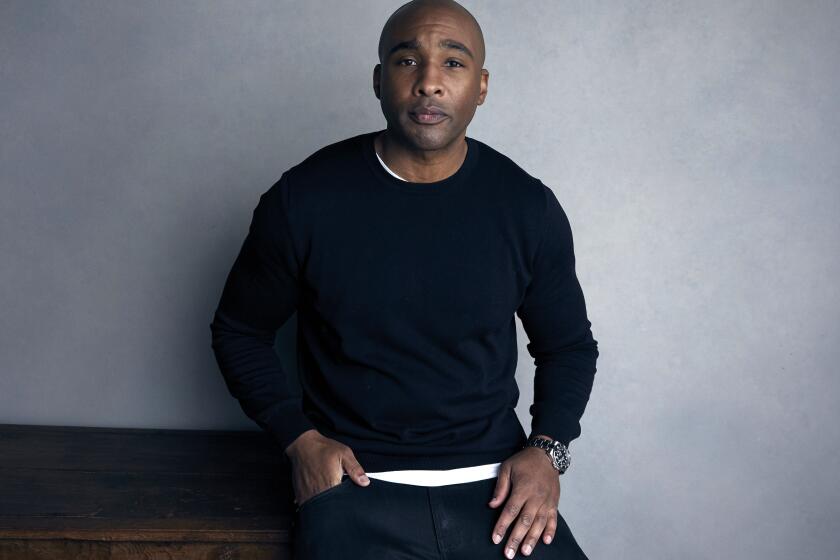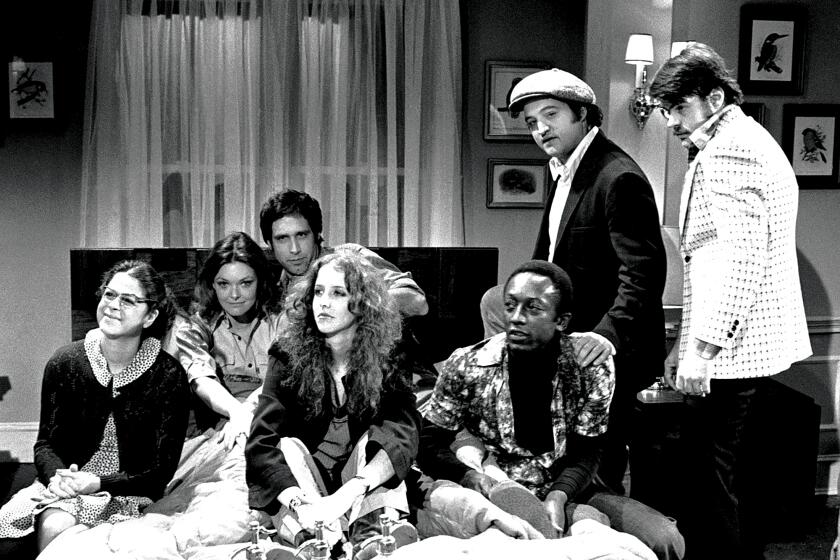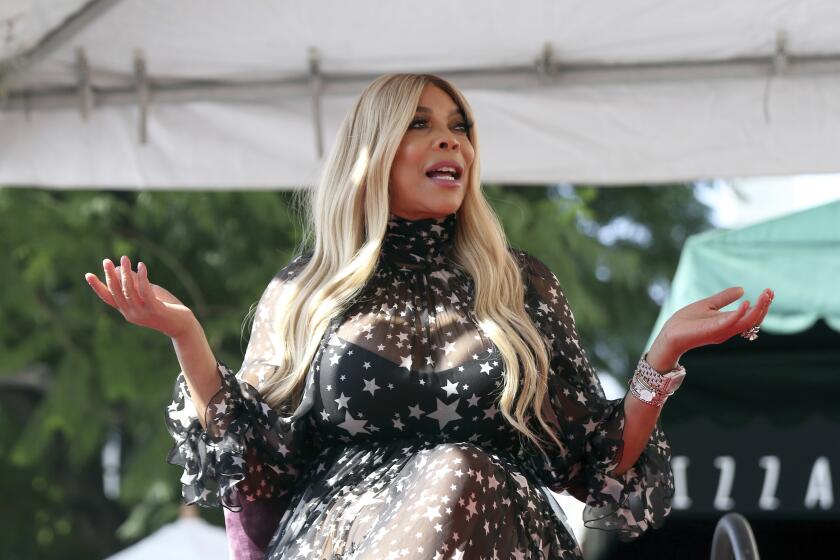After George Floyd’s death, TV promised change. A new study calls out the lack of progress
- Share via
A new diversity study reveals that television still has a long way to go in order to make meaningful steps toward becoming a truly inclusive industry.
On Thursday, UCLA released the TV-focused portion of its annual Hollywood Diversity Report, and it once again found that despite gains, people of color and women remain underrepresented in nearly every employment area examined, both in front of and behind the camera.
The study also questioned the extent of Hollywood’s commitment to diversity and inclusion. Various institutions issued statements supporting the Black Lives Matter movement and committed to making change within their organizations following the national reckoning with racism spurred by the killing of George Floyd earlier this year. But the report notes that, as of September, top TV executives were still 92% white and 68% male.
ABC, CBS, NBC and Fox have pledged to improve diversity in the wake of the Black Lives Matter movement. It’s the latest chapter in a decades-long struggle.
In its conclusion, the study points out that “the meaningful progress this report documents in the television sector has largely occurred in front of the camera, thereby insulating the White males who continue to dominate the executive suites from having to share their power to make industry-defining decisions.”
Authored by Darnell Hunt, dean of social sciences at UCLA, and Ana-Christina Ramón, director of research and civic engagement for social sciences at UCLA, the second part of “Hollywood Diversity Report 2020: A Tale of Two Hollywoods” examined 453 scripted shows across broadcast, cable and digital platforms from the 2017-18 season and 463 scripted shows across the same platforms from the 2018-19 seasons.
The study found that people of color were underrepresented in all 13 categories of employment examined, while women were underrepresented in every category except among the leads in scripted digital series.
The only jobs where the demographics were trending towards proportionate representation were for the lead roles in series across all platforms. Most notably, people of color comprised 35% of leads on cable shows during the 2018-19 season (people of color make up 40.2% of the U.S. population).
While the study showed that people of color reached proportionate representation in broadcast shows when looking at overall cast diversity during the 2018-19 season (and was “within striking distance” on cable and digital), it noted “the degree to which individual racial and ethnic groups were represented on screen, as well as how gender factored in for each group, was not uniform.”
Still, the biggest disparity remains at the executive level and in key jobs behind the camera. Across digital, broadcast and cable, only 10.3%, 10.7% and 14.5% of series creators were people of color, respectively. Women made up 28.6%, 28.1% and 22.4% of creators in those categories.
A review of senior leadership at the six major media companies shows that the top ranks remain overwhelmingly white.
Additionally, during the 2018-19 season, only 24% of credited writers across the broadcast, cable and digital shows analyzed were people of color. And just 22% of episodes during the same time period were directed by people of color.
Although onscreen representation has generally improved over the years, the study found Latinx actors to be among the most proportionally underrepresented on TV.
According to the report, while nearly 17% of the U.S. population is Latino, only 6.6% of broadcast leads were played by Latinx actors during the 2018-19 season. They also played 4% of digital and 5.5% of cable lead roles.
Actors of Asian descent made up 1.7%, 3.1% and 1.8% of lead roles across broadcast, cable and digital shows, respectively, during the same time period (while making up 5.6% of the U.S. population).
During the 2018-19 season, digital platforms were the only ones to feature any shows with Native American actors in lead roles. Digital platforms also featured the highest proportion of Middle Eastern and North African actors in lead roles, at 2.9% during the same period. Only 0.8% of broadcast leads and 0.6% of cable leads were played by MENA actors.
Channing Dungey, a former ABC and Netflix programming executive, will take the reins of the venerable studio in 2021.
In the 2018-19 season, Black actors made up 11.6% of overall broadcast scripted leads, 14.1% of cable scripted leads and 4.7% of digital scripted leads. Black people make up 13.4% of the total U.S. population.
Despite these onscreen gains, the report notes that the TV industry has much to improve if it wants to keep its recent promises and meet the demands of viewers who are increasingly drawn to inclusive shows.
“The Hollywood of on-screen appeasement is ill-equipped to meet the needs of these market realities,” the report concludes. “Only the Hollywood of meaningful inclusion, that empowers diverse voices in every room and at every level, can make the most of the opportunity.”
More to Read
The complete guide to home viewing
Get Screen Gab for everything about the TV shows and streaming movies everyone’s talking about.
You may occasionally receive promotional content from the Los Angeles Times.








